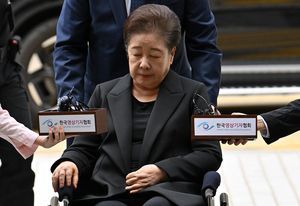The number of marriages began to decrease in 2012, and the decrease in the number of newborns followed after four years.
The reasons for no marriage, such as attitude change and lack of marriage funds, are mentioned.
Recent data shows a 40% decrease in the number of marriages over the past decade.
Given the societal norm in South Korea of having children after marriage, this trend seems to be shaking up the foundation of childbirth.
According to the December 2023 Population Trends from the Korean Statistical Information Service (KOSIS) on the 3rd, the number of marriages (preliminary figure) last year was 193,673.
This is a 40% decrease compared to ten years ago in 2013 (322,807 marriages).
The number of marriages fluctuated until 2011 (329,087 marriages), but has been decreasing since 2012. In 2022, there were a total of 191,690 marriages, showing a continuing decrease for the 11th consecutive year.

Last year, the number of marriages increased by 1,983 (1.0%) due to factors such as delayed weddings due to COVID-19.
However, it remains uncertain whether this upward trend in marriages will continue in the future.
Looking at it quarterly, the number of marriages rebounded by 2.8% from the third quarter of 2022 compared to the same period of the previous year and maintained an increase until the second quarter of last year, but decreased by 8.2% (3,707 marriages) and 5.5% (2,907 marriages) in each third and fourth quarter.
The changing perceptions on marriage served to a significant decrease in the number of marriages.
According to a social survey by Statistics Korea, the proportion of the population aged 13 and over who responded that one must get married decreased from 20.3% in 2012 to 15.3% in 2022. The proportion of those who responded that it is good to get married decreased from 42.4% to 34.8%, indicating a decrease in positive perceptions of marriage.
During the same period, the proportion of those who responded that it is okay to get or not to get married increased from 33.6% to 43.2%.
Economic reasons, such as buying housing, are also becoming barriers to marriage.
When asked about the reasons for not getting married, 32.7% of those in their 20s, 33.7% in their 30s, and 23.8% in their 40s in 2022 cited lack of marriage funds, such as the marriage expense and preparing housing as the most common reason.
Next, 19.3% of those in their 20s and 15.4% in their 40s cited not feeling the need for marriage as the most common reason. For those in their 30s, not meeting a desirable partner for marriage (14.2%) and not feeling the need for marriage (14.2%) were the second most common reasons.

The decrease in the number of marriages is affecting the decrease in the number of births.
The number of births has been decreasing for eight years since recording 438,420 births in 2015. As the number of marriages began to decrease in 2012, four years later, the number of births also began to decline.
The number of births decreased from 436,455 in 2013 to 230,000 last year, indicating a decrease of 47.3%. This is interpreted as showing a steeper decline than the number of marriages over the same period, influenced by the DINKs (double income, no kids couples).
The total fertility rate, which is the average number of children a woman is expected to have in her lifetime, hit a record low of 0.72 last year.
Statistics Korea predicts that the total fertility rate may fall below initial expectations due to the impact of the decrease in marriages during the COVID-19 period. The total fertility rate forecasted by Statistics Korea for this year is 0.68 (based on the median scenario).
Young Il Lim, the head of the Population Trends Division at Statistics Korea said, “If the impact of the low number of marriages during the COVID-19 period continues to be reflected, it could fall below 0.68.”










Most Commented